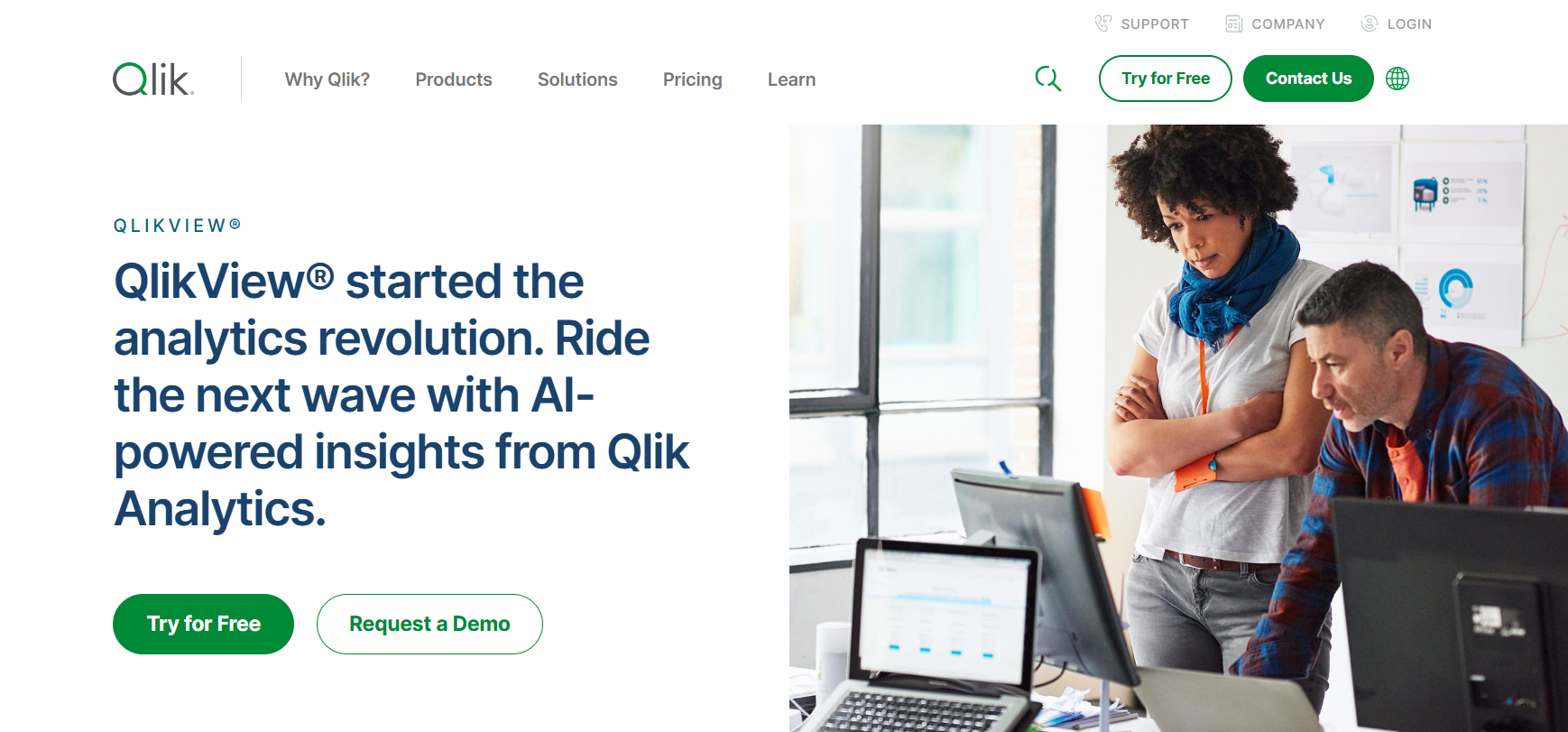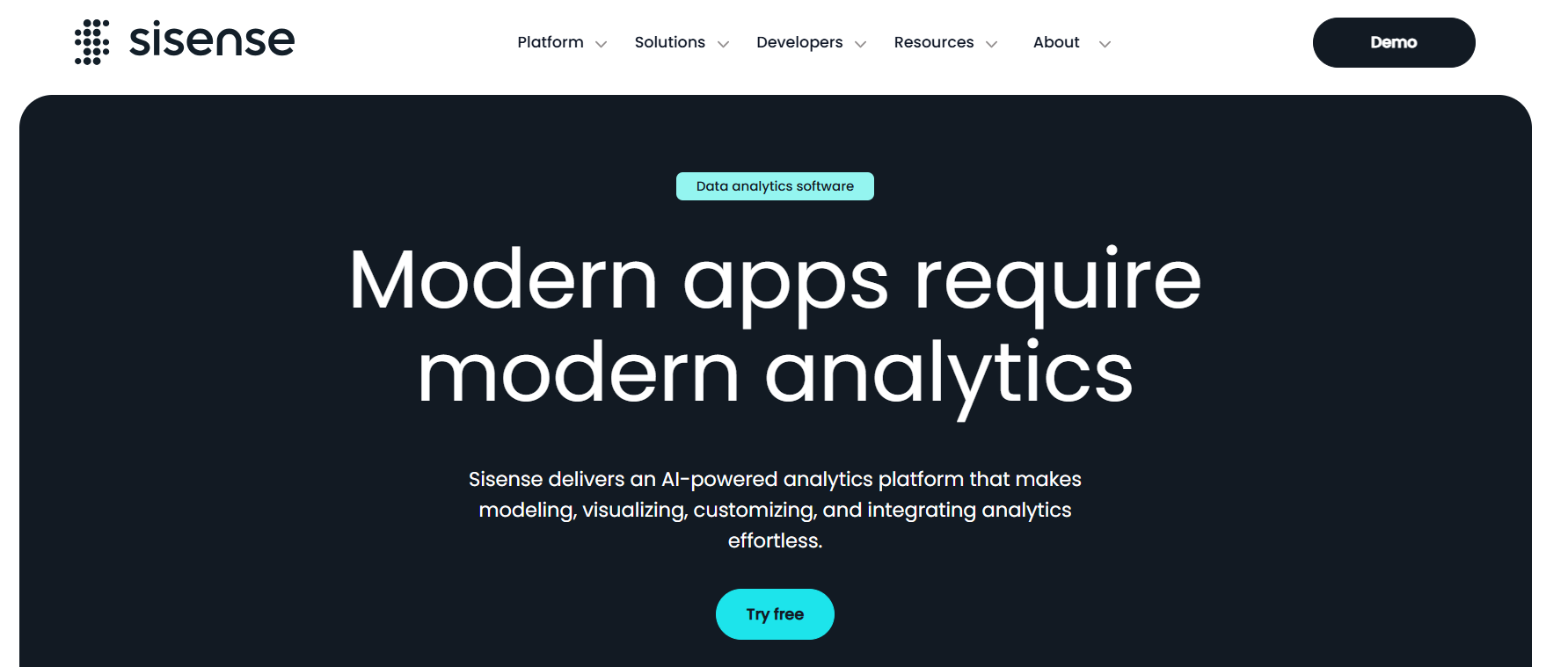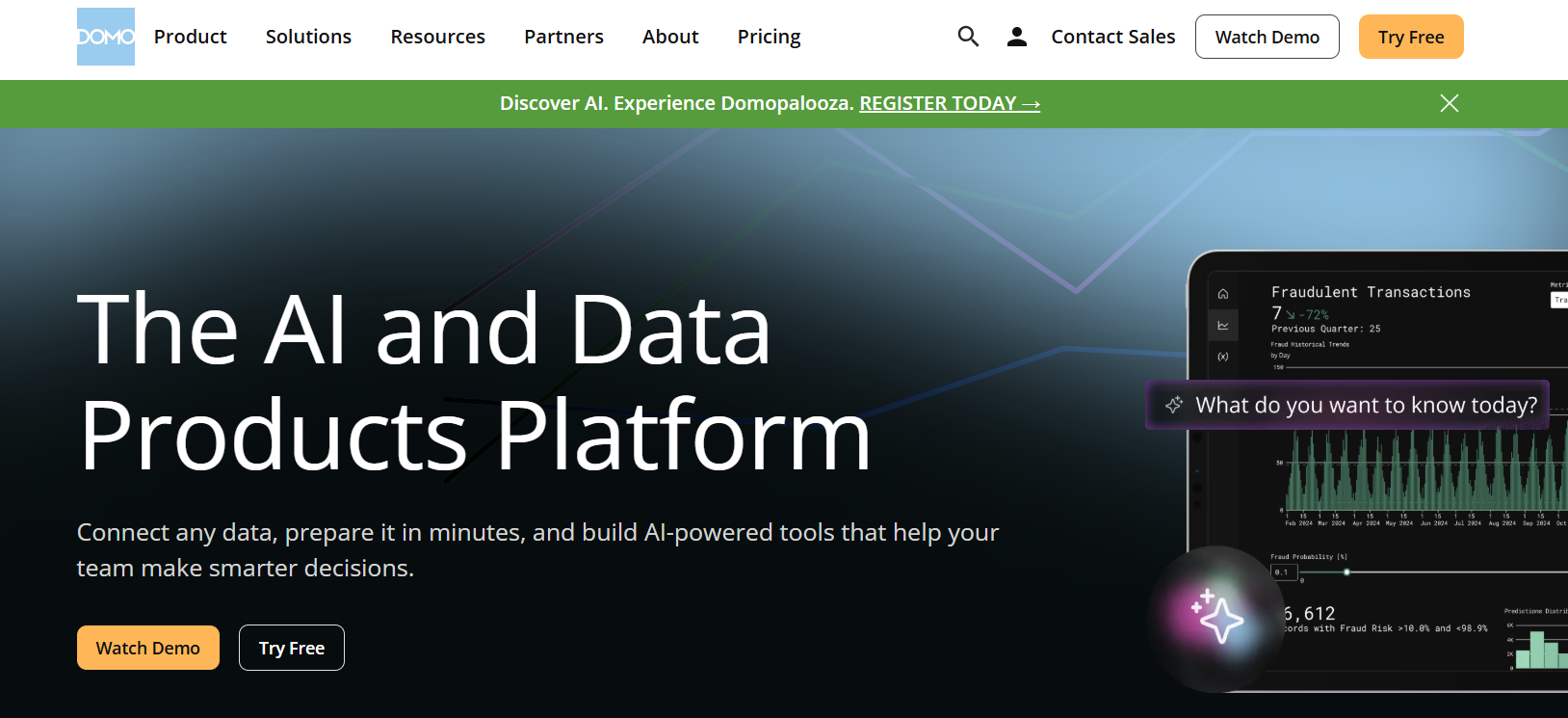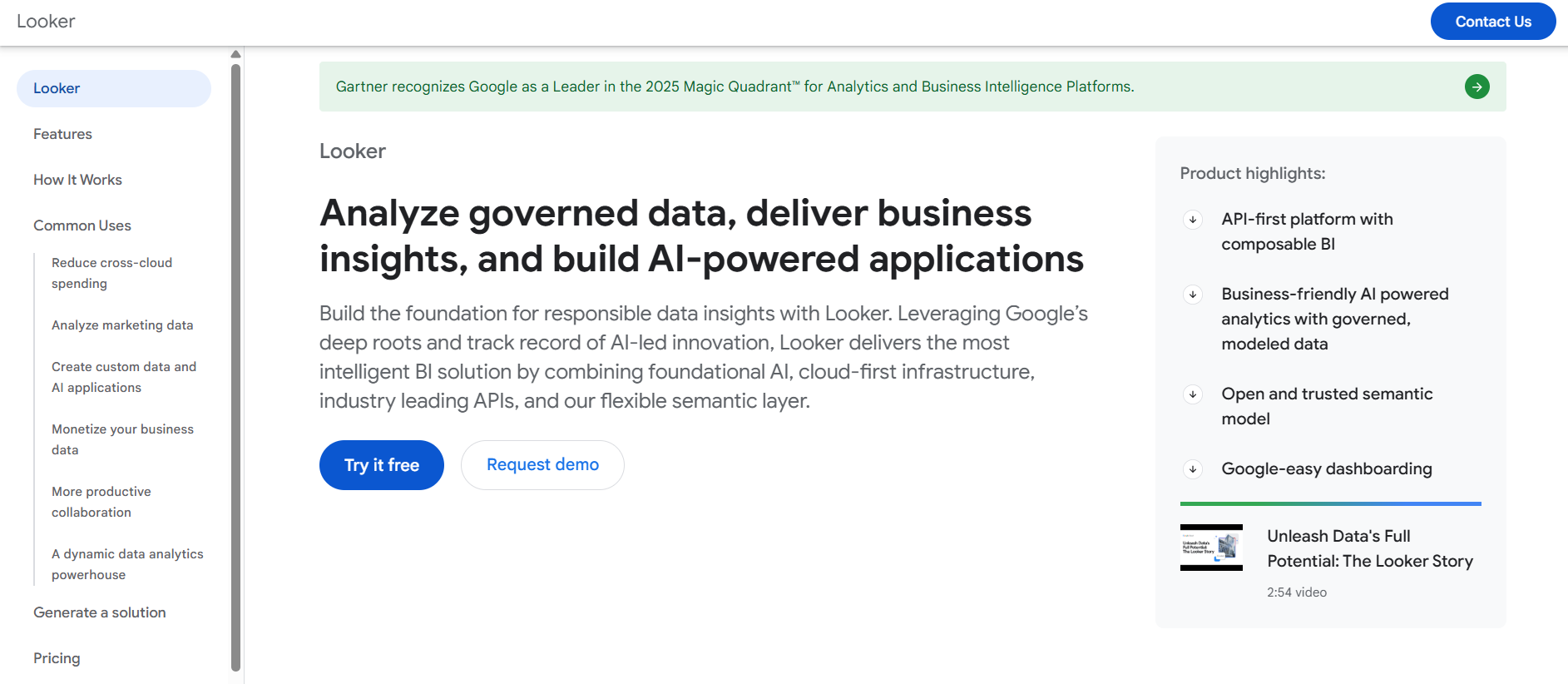Build your first embedded data product now. Talk to our product experts for a guided demo or get your hands dirty with a free 10-day trial.
Tableau is a popular business intelligence and data visualization tool used by thousands of companies around the world. Its user friendly interface, powerful data visualization functionality, great integrations, and strong community make it an obvious choice for data analytics. But what if you’re not happy and you want to try out Tableau alternatives?
Tableau does some things well, but if you’re looking for a more flexible BI tool with less of a learning curve, there are some great choices out there. Today, we take a look at some of the best Tableau alternatives. But first…

While Tableau is incredibly powerful, this comes at a cost. The basic dashboards and reporting are pretty intuitive and easy to use. However, any advanced functionalities and calculations can take a long time for your data engineers and developers to pull off in this Salesforce product.
Tableau pricing is more catered toward large businesses. Tableau can be too much for your budget if you want to do data analysis and visualizations in your small business.
Customization options are not the greatest, either. If you want to create highly customized visualizations to make data exploration easier, your developers are going to struggle.
This analytics platform is also notorious for slow performance with large data sets. Tableau for embedded analytics is also not that great compared to some of the alternatives we’ll mention in a moment.
All in all, Tableau has a lot to offer but at the same time, there are cheaper, more effective ways to create interactive dashboards.
If you need more ease of use, a more affordable pricing model, or better embedded analytics capabilities for business users, there are many great business intelligence tools to choose from.

Looking for a business intelligence platform that lets you create and embed dashboards directly in your software product? Luzmo is the fastest, most flexible, and most affordable alternative to Tableau. It's purpose-built for teams that need embedded analytics that actually fit their product.
With a wide variety of data sources, connectors, and a powerful API, you can easily bring your data into Luzmo and start building interactive dashboards. The drag-and-drop interface and ready-to-use templates make dashboard creation simple for both technical and non-technical users.
What truly sets Luzmo apart are its four modular products that adapt to your analytics needs:
With Luzmo, embedding dashboards takes hours, not weeks. Developers can plug dashboards into your product with minimal effort, while end users get the freedom to create their own dashboards inside your app’s interface using the embedded editor.
Pricing is completely transparent. No matter if you have five or five hundred end users, you’ll always know your monthly cost. And yes, you can test it all risk-free with Luzmo’s free trial.
Embed your first dashboard in less than 10 days and see how Studio, Flex, IQ, and Agent APIs can turn your app into a truly intelligent analytics experience.
TRY LUZMO FREE

Or simply book a demo with our team so we can tell you more about how Luzmo works.

If you’re already in the Microsoft ecosystem and want to empower your internal team to make more data-driven decisions, Power BI is a pretty good choice. It integrates with Azure, SQL Server and Azure Active Directory, making light work for developers used to Microsoft frameworks.
It is much more than an upgraded version of Excel spreadsheets and it allows business users to make real-time, ad hoc reports. Like Tableau, it has massive capabilities but only the basic dashboards are light work. Any customization work will require a knowledgeable data analyst on your team with previous PBI experience.
It also does not handle large, complex data sets really well.
The biggest advantage of this tool is that finding developers who are handy with Power BI should not be a challenge. If you primarily use its desktop tool for data analytics, this is a good choice of a BI tool.

Qlik makes a big promise with their Snapshots: self-service analytics for everyone. Take “snapshots” of data points over time and then turn them into graphs and charts that end-users can understand and use for guiding their decision-making process.
In practice, Qlik only makes sense if you have a large enough team with engineers who can handle the data preparation and data management, and do all the steps before the visualization. This tool has a very steep learning curve and mastering even the most basic workflow can take weeks to learn, let alone something like predictive analytics based on historical data.
If you have an enterprise business with a big data team and you don’t care much for an intuitive interface, Qlik is a solid option. Qlik for embedded analytics is not that great - there are many better alternatives.

Sisense is a business intelligence tool built embedded-first. This means that their primary target audience is SaaS businesses looking to create and embed dashboards in their product. To achieve this, there are three options: Fusion Embed, Compose SDK and Cloud.
Ironically, users report that embedding is not as easy as it is in most Sisense competitors. Instead, the biggest highlight is the choice of visualizations and how easy it is to build and customize dashboards.
By far, the biggest issue is Sisense pricing. In typical enterprise BI tool fashion, you can’t find it publicly, but our research shows you’ll need to spend around $20,000 per year for even the most basic setup.

For teams that want all the necessary data analytics tools in one platform, Domo is an excellent option. Data warehouse, ETL, and visualization - you go from raw, unstructured data to actionable insights without leaving your browser tab.
This array of features comes at a cost, both figurative and literal. Users report that Domo is pretty difficult to master, even compared to traditionally complex tools such as Power BI. When it comes to the actual pricing, Domo keeps it a mystery but research shows that you can expect invoices in the rank of Looker. In other words, six figures annually.

Amazon Quick Sight is the AWS cloud platform for business intelligence. It offers some cutting-edge features, such as natural language processing and machine learning, allowing end users to easily explore data by asking questions in plain English. It is also praised for its fast performance, even when working with large datasets.
If scalability is your concern, Quicksight is a superb option. It’s fast, and works great across different devices and browsers, making it a surprisingly good choice for an embedded use case.
The downside is that compared to Tableau or Looker, the visualization options are fairly limited. Your dashboards may be AI-powered and load quickly, but there are not many chart types to choose from.

Not to be confused with Looker Studio (Google Data Studio), Looker is the tool of choice for many enterprise businesses. And for a good reason, too: its proprietary LookML makes it easy to do data modeling, analyze data, and prepare it for visualization.
Similarly to Tableau, it’s not geared for non-technical users and to get the most out of it, you’ll need a good data team. However, Looker makes up for it with a wide variety of visualization options.
The other downside is that Looker is very expensive. Prices can easily go from $5-10,000 per month, which may be worth it for your specific needs. However, it’s not exactly small-business-friendly.

Metabase is an open-source BI solution that allows anyone to visualize and explore their company’s data without knowing SQL or Python. It’s an ideal free version of data visualization software for small teams that need a quick, user-friendly interface to build reports and dashboards.
This software for data analytics comes with a drag-and-drop builder, so you can create customizable dashboards without writing code. It’s designed for self-service BI, meaning both technical and non-technical users can generate insights from real-time data. You can also deploy Metabase on-premises or in the cloud, including Google Cloud, making deployment flexible and straightforward.
While Metabase helps teams seamlessly connect to data and visualize results, it does have limits. The semantic layer is fairly basic, and handling robust data models or advanced calculations can require manual work. Compared to premium BI tools comparable to Tableau, it lacks depth in automation and advanced customization. The free version is a great start, but scaling it across large datasets or enterprise needs may lead to high cost for the paid license.
Still, for smaller companies that want to visualize analytics and data quickly and affordably, Metabase is a solid entry point into modern business intelligence.
Tableau remains one of the top data visualization software options for large enterprises, thanks to its advanced modeling capabilities and deep integrations. But its high cost, complex deployment, and lack of flexibility make it less practical for many teams in 2025 and beyond.
If your company’s goal is to empower users with real-time data, intuitive dashboards, and predictable pricing, it’s time to look beyond Tableau.
At Luzmo, we offer a customizable, embedded analytics platform that’s easier to set up, scalable for any deployment format, and built for both developers and non-technical users. You can create reports and dashboards, embed them seamlessly, and get to insights faster than ever.
Start your journey toward better BI. Grab your free trial and see how Luzmo transforms your analytics and data experience.
Build your first embedded data product now. Talk to our product experts for a guided demo or get your hands dirty with a free 10-day trial.
